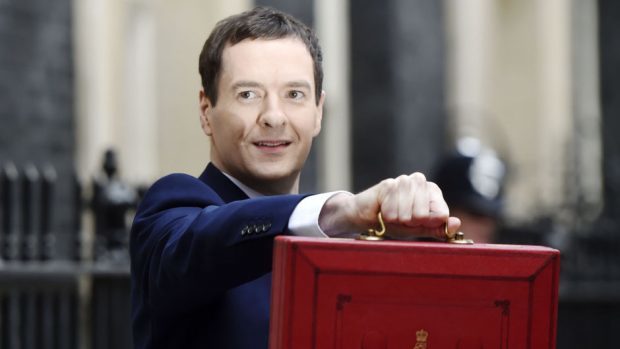The Chancellor could be forgiven for approaching this Budget with a certain weary resignation. It is, after all, his fourth fiscal statement in 12 months. And he will have been well aware that the constraints he always faces on Budget Day have only tightened over the past year.
What are these constraints? First, Mr Osborne had to demonstrate his grip on the economy, despite a more troubling global backdrop and cuts not only to the Office for Budget Responsibility’s (OBR’s) short-term growth forecasts but also its view on longer-term growth potential. Second, he needed to convey a sense of control over the public finances, despite abandoning his self-imposed welfare cap in the Autumn Statement and missing his target to reduce government debt’s share in the economy next year. And finally, he had to avoid doing anything to thwart his political goals – to achieve a vote to remain in the EU in June’s referendum and to shore up his support amongst Conservative backbenchers ahead of the future leadership election.
Faced with these challenges, Mr Osborne has adopted a three-pronged approach to Budget 2016. First, he has executed a version of political strategist Sir Lynton Crosby’s ‘dead cat’. In other words, by throwing a livelier feline on the table – in this case, a tax on sugary drinks – Mr Osborne hopes to distract from some of the more difficult messages underlying Budget 2016. His announcement of a Lifetime ISA for the under 40s is a slightly cuter version of the same strategy. But there were surprisingly few giveaways that hadn’t been trailed in advance, such as tax allowance changes and devolution measures. This may be a sign of the constraints under which he is currently operating.
Second, Mr Osborne has used a range of revenue-raising techniques to safeguard his one remaining fiscal goal. By taking this approach, he hopes to avoid another ‘omnishambles’ fiasco of the kind that afflicted him following the 2012 pasty and caravan Budget. While he spent an hour talking about gathering storm clouds and devolution revolutions, the real question for economists was how the Chancellor plans to achieve a virtually unchanged £10.4billion fiscal surplus by 2019/20, given sharp GDP growth downgrades and much larger projected deficits over the next few years. Though the Soft Drinks Industry Levy (SDIL) will grab the headlines, bringing in an anticipated £0.5bn a year from 2018-19, far larger sums are expected to be raised from four sources:
• The politically uncontentious: tax clampdowns of £2-3billion a year;
• The technically complex: changes to the public sector pensions discount rate bringing £2billion a year into the government’s coffers by 2019/20;
• The well-trailed: cuts to disabled benefits amounting to £1.2billion a year of extra revenues by 2018/19;
• The handily deferred: a deferment of the re-timing of corporation tax payments for large groups is projected to push back a two-year budgetary gain of £10billion to when the Chancellor needs it most – in other words, 2019/20 and 2020/21.
Third, while ‘Project Fear’ may be a term of abuse in the EU referendum debate, Mr Osborne has deployed a version of it in Budget 2016 – accompanied by more positive messages about sunny uplands to come. On the former, there were mentions of “a dangerous cocktail of risks” and reminders of the UK’s lack of immunity to “slowdowns and shocks”, combined with appeals to the Chancellor’s track record since 2010 in repairing the public finances. In addition, Mr Osborne was careful to link the OBR’s downgraded view on the UK’s productivity outlook – which will have been an unexpected blow, given its negative implications for the UK’s medium-term growth potential – to the global financial crisis (which did not, of course, occur on his watch). On the latter, there were education reforms for the much-mentioned “next generation”, tax gains for small businesses and increases in the income tax personal allowance and higher rate threshold from April 2017. All of these measures should appeal to his backbenchers and, he hopes, to the wider electorate.
Dealt a difficult hand, Mr Osborne may feel reasonably pleased with his Budget. But past experience and natural caution suggest that he won’t yet rest easy. For all the talk of his track record, he has now abandoned two of his three fiscal targets. For all the care taken to achieve that one remaining fiscal goal in the least politically risky way, it will still involve substantial revenue-raising tax changes for large corporates. And for all the focus on achieving a fiscal surplus by 2019/20, the economic case for such a move is less clear – given that we do not know how the UK economy will be performing at that time, nor whether we may have reached the limits of central banks’ ability to do all of the work to prop up anaemic global growth – than his ideological imperative. Spending cuts of £3.5billion a year, amounting to 0.5% of GDP, may not sound large, but on top of a huge squeeze already in train there will undoubtedly be difficult decisions ahead.
Lucy O’Carroll is chief economist at Aberdeen Asset Management
